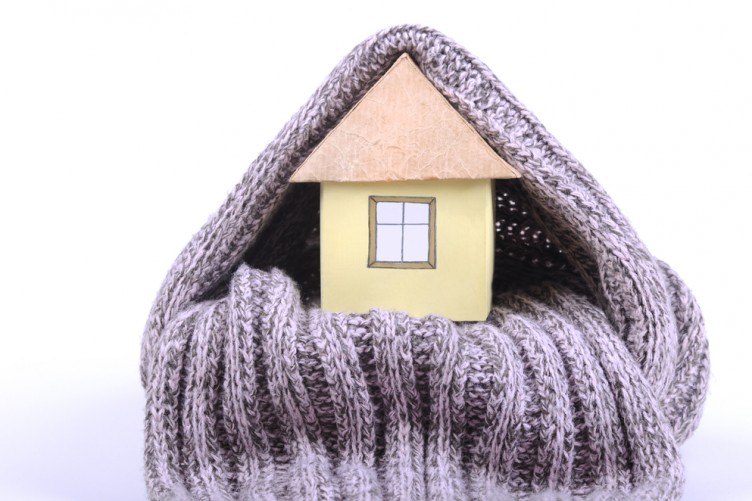This article’s goal is to provide a thorough guide to the topic of fiberglass insulation for homes. In this article, we will talk about the advantages of installing fiberglass insulation in your home, as well as what supplies are required for installation and how to do it correctly. In addition, we will go over some safety precautions to take when working with fiberglass insulation, as well as some points to keep in mind when making decisions about the type of fiberglass insulation to use.
We will also go over some maintenance tips for your fiberglass insulation, which will allow it to serve you for a longer period of time and increase the amount of energy efficiency it provides. You should have a better knowledge by the time you reach the conclusion of this article of which type of fiberglass insulation is most suited for your home and why you should choose that type. Let’s get started!
What is Fiberglass Home Insulation?
Fiberglass home insulation is a type of building material that helps to keep the temperature inside your home consistent and reduce energy costs. It is made out of tiny glass fibers bound together by a binder which can be either resin or plastic. This insulation works by trapping air particles in between its fibers, which prevents heat from escaping or entering your home through walls and ceilings.
Advantages of Fiberglass Home Insulation:
Advantage #1: Reduce Energy Costs
Installing fiberglass home insulation can help you reduce energy costs. It creates a thermal barrier between your home’s interior and exterior, which helps to keep the temperature inside your home consistent and prevents heat from entering or exiting the house. This means that your heating and cooling systems won’t have to work harder in order to maintain an ideal temperature inside the house, resulting in lower energy bills.
Advantage #2: It Is Very Durable
Fiberglass insulation is also known for being very durable. It is resistant to mold, rot, moisture, fire, and bugs, making it a great choice if you are looking for long-term protection against these elements. This makes it a great option for homes that experience more extreme weather conditions throughout the year.
Advantage #3: It Is Easy to Install
Fiberglass insulation is also quite easy to install, making it an attractive option for DIYers who are looking to upgrade their home’s insulation without breaking the bank. All you need is a few basic tools and some fiberglass insulation rolls or batts, which can be found at most hardware stores. Most fiberglass insulation comes with detailed instructions on how to properly install it, so you don’t have to worry about getting it wrong.
Advantage #4: It Is Relatively Inexpensive
Finally, fiberglass insulation is relatively inexpensive compared to other types of insulation. Since it does not require any special tools or skills for installation, the cost of buying and installing fiberglass insulation is usually quite low. This makes it a great option for those on a budget who still want to increase their home’s energy efficiency.

Safety Precautions When Working with Fiberglass Insulation:
Fiberglass insulation can be dangerous if you are not careful when handling it. Always wear protective clothing (such as gloves, long-sleeved shirts, pants, and a respirator) when working with fiberglass insulation in order to prevent skin irritation. Also, make sure that the area where you are working is well-ventilated so that you don’t inhale any of the fibers.
What Supplies Do You Need?
When installing fiberglass home insulation, there are a few supplies that you will need. These include:
- Fiberglass insulation rolls or batts – these will serve as the actual insulation material
- Face mask and safety goggles – for protection when handling the insulation
- Tape measure and level – for measuring and leveling the insulation
- Utility knife – for cutting the insulation
- Hammer and nails or staple gun – for attaching the insulation to walls or ceilings
- Gloves – for protection when handling the insulation
You may need additional tools depending on the type of fiberglass insulation you are using. For example, if you are installing fiberglass insulation in a wall cavity, then you will also need to have a drill to make any necessary holes. Additionally, if you will be working with existing insulation, then it is a good idea to wear old clothes that can easily be disposed of when you are done.
How To Install Fiberglass Home Insulation?
Installing fiberglass home insulation is relatively simple. First, make sure that the area where you plan on installing the insulation is clean and free from debris. Then, use a tape measure and level to determine the size of the area you need to insulate. You can then cut the insulation to fit your desired space using a utility knife, but be sure that there is no exposed fiberglass, as this can cause irritation if it comes in contact with skin.
Once you have cut the insulation to fit, you can attach it to walls or ceilings with either nails or a staple gun. Make sure that the insulation is firmly attached and that there aren’t any gaps between pieces. Finally, use a face mask and safety goggles when handling the insulation to avoid breathing in any fibers or particles.
It’s best to hire insulation professionals that are experienced in fiberglass home insulation installation to ensure the job is done correctly. Professionals will be able to provide specialized advice and help you get the most out of your insulation project.

Maintenance Tips
Tip #1: Inspect Regularly
Fiberglass insulation should be inspected regularly for any signs of wear and tear. Check to make sure that there are no gaps between pieces, as this can cause air leakage or heat loss. Additionally, keep an eye out for any rodents or other pests that may have made their way into the insulation.
Tip #2: Clean Regularly
To maintain the effectiveness of your fiberglass home insulation, it is important to clean it regularly. Use a vacuum cleaner with a long attachment to remove any dust or debris from the surfaces of the insulation material. If necessary, use a damp cloth to wipe away any stubborn dirt particles. Be careful not to get the insulation too wet, however, as this could damage it.
Tip #3: Repair and Replace
If you notice any areas of the insulation that are damaged or worn, it is important to repair or replace them as soon as possible. This will ensure that your home stays insulated properly and that no air leakage occurs. If you are unsure how to make repairs yourself, then it is best to contact a professional for assistance.
Tip #4: Wear Protective Clothing
Finally, always remember to wear protective clothing when handling fiberglass insulation. This includes gloves, long-sleeved shirts, pants, and a respirator. Doing so will help to prevent skin irritation or breathing in any of the fibers.
Conclusion
Installing fiberglass home insulation is a relatively straightforward process that can help to keep your home warm in the winter and cool in the summer. In order to ensure that your insulation remains effective, however, it is important to inspect, clean, repair, and replace it regularly. Additionally, always make sure to wear protective clothing when handling fiberglass insulation so that you don’t inhale any of the fibers. With regular maintenance and care, your fiberglass insulation should last for years to come.




